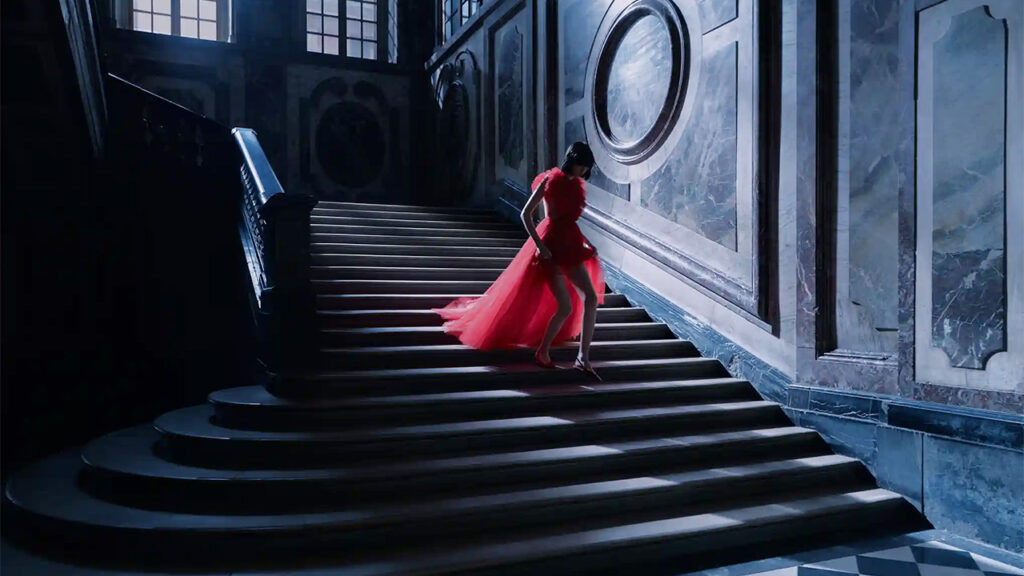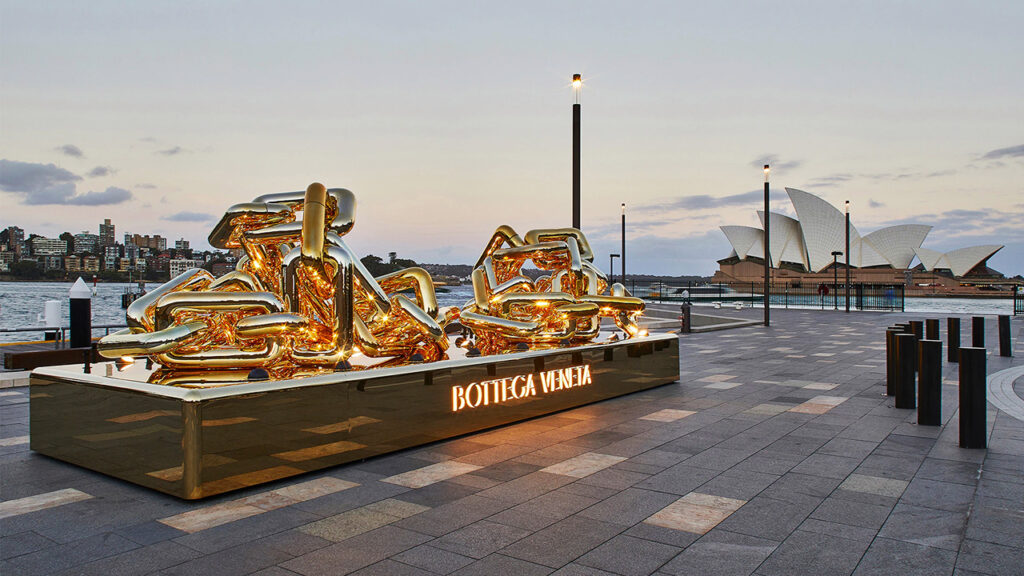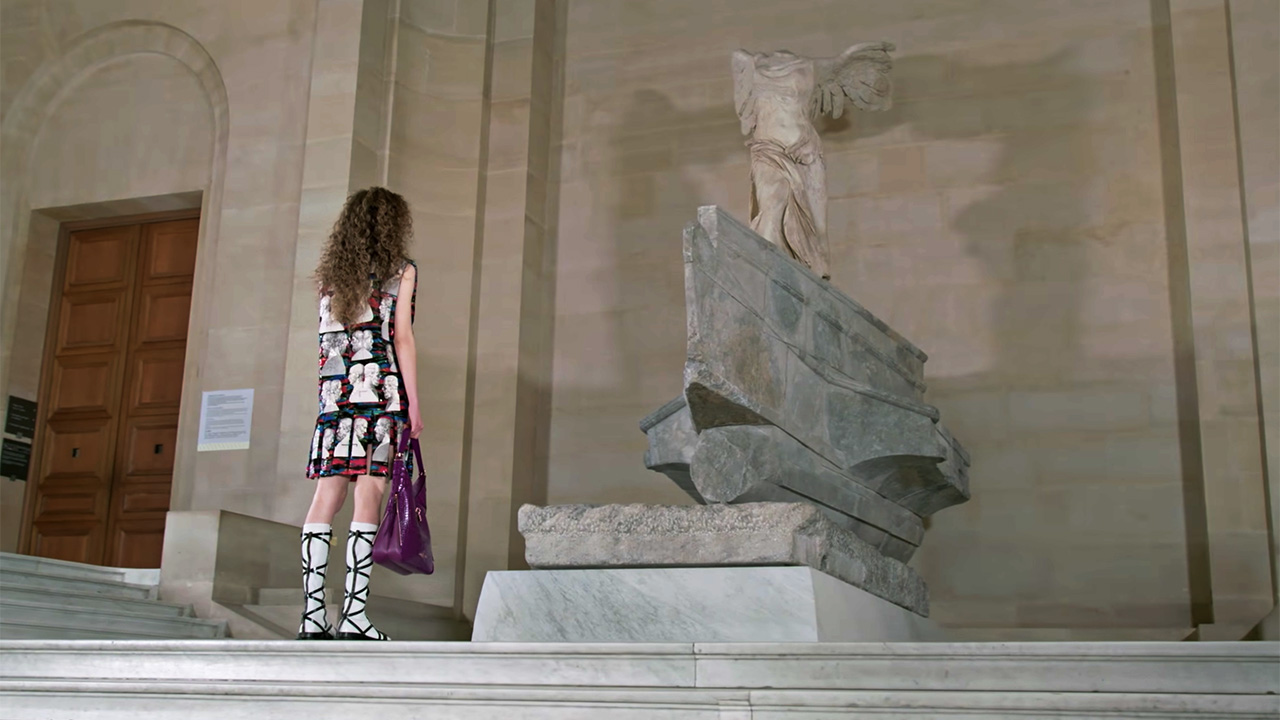It has now been over a year of global coronavirus-enforced social distancing restrictions, event cancellations, and temporary museum closures, all of which have contributed to a digital-first acceleration. Yet, notably, as fashion weeks have been forced online for the Fall ‘21 season, some leading luxury brands have streamed their virtual runways from within the closed doors of museums, theaters and galleries, allowing cultural institutions to retain their presence in public consciousness.
In early March, Louis Vuitton streamed its audience-free catwalk from the Musée du Louvre’s Michelangelo Gallery, while Christian Dior filmed in the Palace of Versailles’ 17th-century court. Both designers have shown in these spaces in the past — Louis Vuitton staged the first-ever runway show in the Louvre in 2017; Versailles served as the backdrop for Dior’s 2012 Secret Garden campaign — but these latest presentations felt particularly reflective following a year of lockdowns, acting as a distinct celebration of the arts. Over in Italy, the Valentino show was streamed from Piccolo Teatro di Milano, Milan’s first permanent theater which has been closed since the very start of the pandemic.

Besides hosting Dior’s Fall 2021 runway, Versailles was also the site for “Disturbing Beauty,” a goth-tinged pre-show teaser shot by Fabien Baron. Image: Adrien Dirand / Dior
While museums have often lent the fashion world a wealth of cultural capital, most notably through collaborative collections, luxury brands are now keeping these momentarily shuttered institutions alive in public discourse. To do so, they’ve made the best of these awe-inspiring physical spaces to create and stage conversation-sparking virtual events.
“The core idea actually needs to be focused more towards Instagram moments because that is what is possible right now,” explains Simon Woolford, founder of luxury marketing agency Sum Design, who also highlights how physical marketing remains essential. “There has also been a lot of practical thinking that has gone into the planning, with outdoor locations chosen to enable a socially distanced environment, and fluid mobility used in the design.”
Beyond occupying museums and theaters, brands have indeed leveraged the appeal of art in pop-up or outdoor events. Last year, Bottega Veneta’s giant outdoor sculpture replicating their signature vermeil chain served as a vehicle for viral marketing; the ornate golden sculpture toured cities from Shanghai to Tokyo to Sydney throughout 2020.

“The Chain,” Bottega Veneta’s traveling sculpture, made its way across major cities in 2020, generating monolith-esque virality along the way. Image: Bottega Veneta
Another prime example: Louis Vuitton’s month-long Walk In The Park, a rainbow-hued pop-up in Paris’ Quai de la Mégisserie that arrayed the collections since Spring/Summer 2019. During the month, visitors could also use the augmented reality feature on an accompanying app to access and interact with the mascots of Louis Vuitton’s Shanghai show. These animated characters also featured in the luxury house’s “Zoooom With Friends” installation in the Miami Design District, which was open to all visitors in the area.
“Traditionally, installations and pop-ups have been used to enable the consumer to experience the brand firsthand,” says Woolford. “In this way, the consumer has a more enduring, memorable experience, rather than a disposable one.”
With the increasing digitization of culture, post-pandemic consumers will crave physical, experiential events or installations more than ever. Fashion incorporating the arts into its marketing ventures is nothing new, but as Highsnobiety’s Editor-in-Chief Thomas Bettridge told WWD earlier this year, “I see fashion brands being like cultural institutions of the future.”
The recent announcement of the Chanel Culture Fund makes Bettridge’s point. A new initiative by the French fashion house to support the arts, it aims to fund arts projects, support progressive programming, and facilitate mentoring opportunities. As the project rolls out, Chanel will be consulting and working with museums including London’s National Portrait Gallery, the Underground Museum in Los Angeles, Centre Pompidou in Paris, and GES-2 in Moscow.
While not yet entirely cultural arbiters — or at least not widely recognized as such — fashion brands’ eager forays into the museum space and entreaties to art audiences make them cultural prospects to watch, if not cultural institutions-in-waiting.



